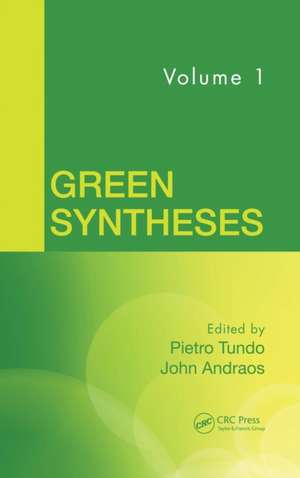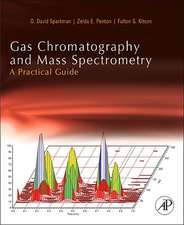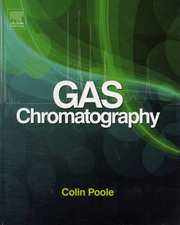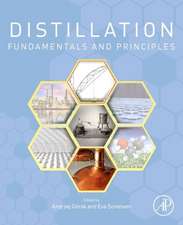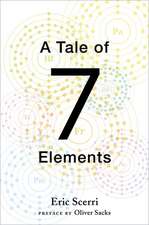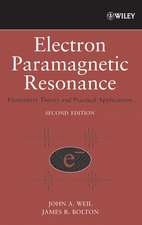Green Syntheses, Volume 1
Editat de Pietro Tundo, John Andraosen Limba Engleză Hardback – 20 iun 2014
Presenting a new concept in green chemistry, this book demonstrates what future publications might look like if green principles are followed and also incorporate the important ethical aspect of supplying rigorous procedures in laboratory practice and evidence of greenness of a given synthesis protocol using metrics analysis. This inaugural volume initiates the much-needed transition from stating the 12 guiding principles on the philosophy of green chemistry to the actualization and verification of it.
The book addresses primarily the issue of material efficiency metrics, which measure the amount of waste produced relative to desired product. In each contributed example, full experimental details are given showing all quantities of materials used in the procedure. Authors discuss the green merits of their protocols in conjunction with the results of a thorough metrics analysis, allowing for in-depth discussion of insights about synthesis strategy and performance characteristics of the new and prior cited plans.
| Toate formatele și edițiile | Preț | Express |
|---|---|---|
| Paperback (1) | 489.26 lei 6-8 săpt. | |
| CRC Press – 5 sep 2019 | 489.26 lei 6-8 săpt. | |
| Hardback (1) | 1330.65 lei 6-8 săpt. | |
| CRC Press – 20 iun 2014 | 1330.65 lei 6-8 săpt. |
Preț: 1330.65 lei
Preț vechi: 1622.75 lei
-18% Nou
Puncte Express: 1996
Preț estimativ în valută:
254.70€ • 276.75$ • 214.09£
254.70€ • 276.75$ • 214.09£
Carte tipărită la comandă
Livrare economică 21 aprilie-05 mai
Preluare comenzi: 021 569.72.76
Specificații
ISBN-13: 9781466513204
ISBN-10: 1466513209
Pagini: 246
Dimensiuni: 156 x 234 x 20 mm
Greutate: 0.56 kg
Ediția:New.
Editura: CRC Press
Colecția CRC Press
ISBN-10: 1466513209
Pagini: 246
Dimensiuni: 156 x 234 x 20 mm
Greutate: 0.56 kg
Ediția:New.
Editura: CRC Press
Colecția CRC Press
Public țintă
Academic and Professional Practice & DevelopmentCuprins
Introduction to the Green Syntheses Series. Application of Material Efficiency Metrics to Assess Reaction Greenness—Illustrative Case Studies from Organic Syntheses. Reaction 1: Synthesis of 3-Benzyl-5-Methyleneoxazolidin-2-one from N-Benzylprop-2-yn-1-Amine and CO2. Reaction 2: Synthesis of the 5-Membered Cyclic Carbonates from Epoxides and CO2. Part I: Green Methods for the Epoxidation of Olefins Using Venturello Anion-Based Catalysts. Part II: Green Methods for the Epoxidation of Olefins Using Lacunary-Type Phosphotungstate Anion-Based catalysts. Solvent-Free Flavone Synthesis reaction Using KHSO4 as Recyclable Catalyst. Waste Minimized Synthesis of γ-Nitroketones. Green Syntheses of Ethers and Esters Using Dimethyl Carbonate. Synthesis of Ethyl Octyl Ether by Reaction between 1-Octanol and Ethanol over Amberlyst 70. Reaction: Organocatalytic Asymmetric Tandem Epoxidation-Passerini Reaction . Reaction: Green Synthesis of Chalcone and Coumarin Derivatives via a Suzuki Cross-Coupling Reaction. Enzymatic-Synthesized Hydroxy-L-Prolines as Asymmetric Catalysts for Green Synthesis. Green Synthesis of Homoallylic Silyl Ethers. Environmentally-Friendly Synthesis of Norstatines in Water. Five-Membered and N- and O-Heterocycles by Dimethyl Carbonate Chemistry. Acronym Index . Compound Index. Formula Index. Subject Index.
Notă biografică
John Andraos earned a PhD in 1992 from the University of Toronto in physical organic chemistry. He has done consulting assignments with the pharmaceutical industry on various aspects of synthesis optimization and green chemistry education, including Merck, Bioverdant, Scientific Update, Apotex Pharmaceuticals, and Row2 Technologies. Dr. Andraos is the author of 50 scientific papers in refereed journals, 8 book chapters on the subject of green chemistry metrics and education, and the book The Algebra of Organic Synthesis: Green Metrics, Design Strategy, Route Selection, and Optimization (CRC Press/Taylor & Francis, 2012). In 2000 he launched the CareerChem website (http://www.careerchem.com/MainFrame.html), and he is now a full-time consultant with CareerChem in Toronto, Canada.
Pietro Tundo is professor of organic chemistry at Ca’ Foscari University of Venice (Italy). He is holder of the Unesco Chair on Green Chemistry (UNTWIN No. 731) and author of approximately 260 scientific publications and 30 patents. He authored the book Continuous Flow Methods in Organic Synthesis (E. Horwood, Chichester, UK, 1991) and is editor of approximately 15 books. Dr. Tundo was president of the Organic and Biomolecular Chemistry Division of IUPAC (biennium 2007–2009) and presently is chairman of the Working Party on Green and Sustainable Chemistry of the European Association for Chemical and Molecular Sciences (EuCheMS). He is founder of the IUPAC International Conferences Series on Green Chemistry.
Pietro Tundo is professor of organic chemistry at Ca’ Foscari University of Venice (Italy). He is holder of the Unesco Chair on Green Chemistry (UNTWIN No. 731) and author of approximately 260 scientific publications and 30 patents. He authored the book Continuous Flow Methods in Organic Synthesis (E. Horwood, Chichester, UK, 1991) and is editor of approximately 15 books. Dr. Tundo was president of the Organic and Biomolecular Chemistry Division of IUPAC (biennium 2007–2009) and presently is chairman of the Working Party on Green and Sustainable Chemistry of the European Association for Chemical and Molecular Sciences (EuCheMS). He is founder of the IUPAC International Conferences Series on Green Chemistry.
Descriere
This book, the first volume in the new Green Syntheses series, presents reaction pathways that include a single reaction or a multi-step sequence to a known product. A unique feature of this series is to include green metrics as a key component of submissions of original works in order to substantiate the level of "greenness" of new chemical processes. It helps fill an expressed need by both academia and industry to incorporate, together with accurate synthetic protocols, metrics analysis as a means to rigorously define efficiency and sustainability of chemical syntheses.
